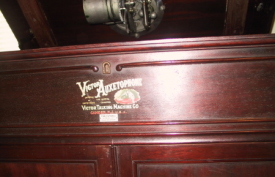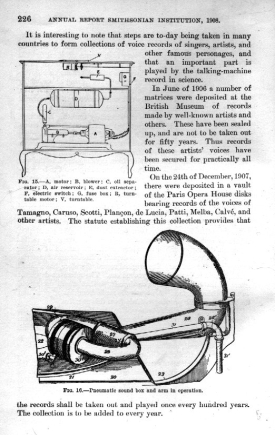
VictorAuxetophone
This article is part of the ANTIQUE PHONOGRAPH, GRAMOPHONE AND TALKING MACHINE IDENTIFICATION GUIDES.
SEE ALSO: Our listings of outside horn talking machines for sale.
Introduced around 1906, the Auxetophone was another attempt to go beyond the limits of acoustic amplification.
Columbia had attempted to ramp up the volume with an amber friction wheel with its Twentieth Century cylinder Graphophone, in Victor's case the Auxetophone experimented with pneumatic amplification. An air compressor was installed in the innards of the case.
Note the metal tubing running to the special reproducer.

Lynn Bilton
Box 435
Randolph,OH 44265
330 325-7866
We buy, sell, and repair antique phonographs and music boxes.
Pick-up and delivery possible in many parts of the midwest, south, and northeast.
Mechanical music
for sale

 For Sale
For Sale








 Contact/
Contact/



